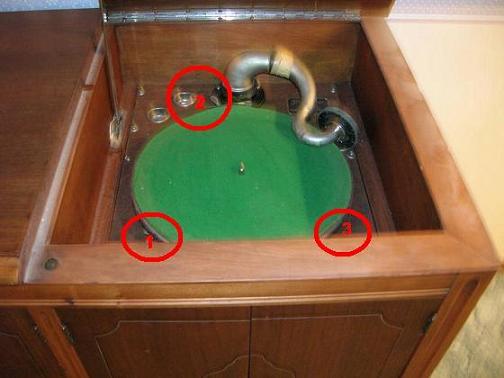|
Author
|
Topic: How to operate Gramophone?
|
Winbert Hutahaean
Film God
Posts: 5468
From: Nouméa, New Caledonia
Registered: Jun 2003
|
 posted November 27, 2009 10:24 PM
posted November 27, 2009 10:24 PM



As I wrote in other thread, I just bought a Gramophone recently.
This is my first time to have a Gramophone and I think it will be my last. So I don't want to make trouble with it.
Now, I see there are 3 switches near the platter (as picture below).

I believe I understand switch no. 3, it is for speed adjustment (slow or faster).
But what are switch no. 1 and 2 for?
I did play with switch no. 1 by turning right when platter was playing and the platter was stop turning.
I also played with switch no. 2 by turning right, and give the same impact, i.e platter was stop.
So if you guys know what is the purpose for switch no.1 and 2, could you give me an info please.
Secondly, Damien on my other thread told that to change needles every one or two songs. What will be the impact if I use until 4-5 songs?
Lastly, any suggestion about what should not be done with a Gramophone.
thanks,
--------------------
Winbert
| IP: Logged
|
|
|
|
|
|
|
|
|
|
|
|
|



 UBBFriend: Email this page to someone!
UBBFriend: Email this page to someone!
 Printer-friendly view of this topic
Printer-friendly view of this topic



 UBBFriend: Email this page to someone!
UBBFriend: Email this page to someone!
 Printer-friendly view of this topic
Printer-friendly view of this topic